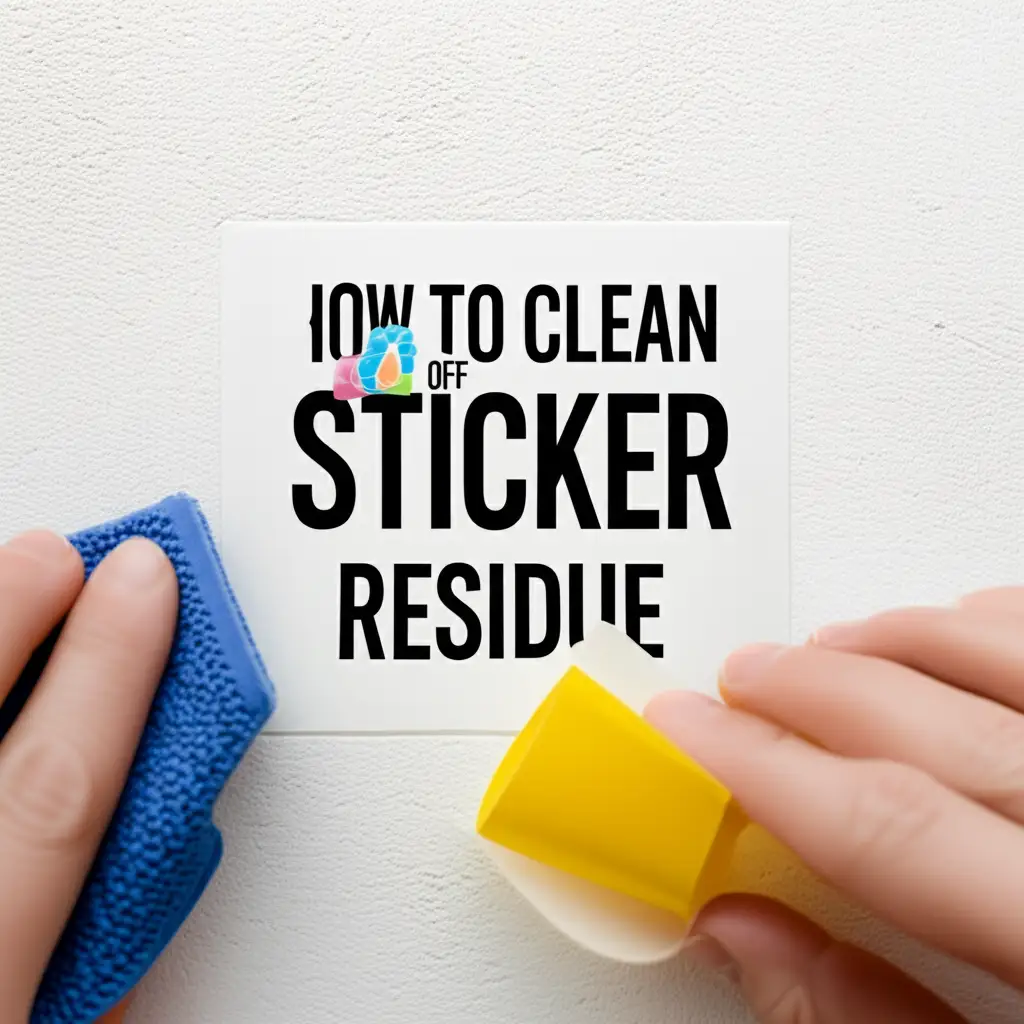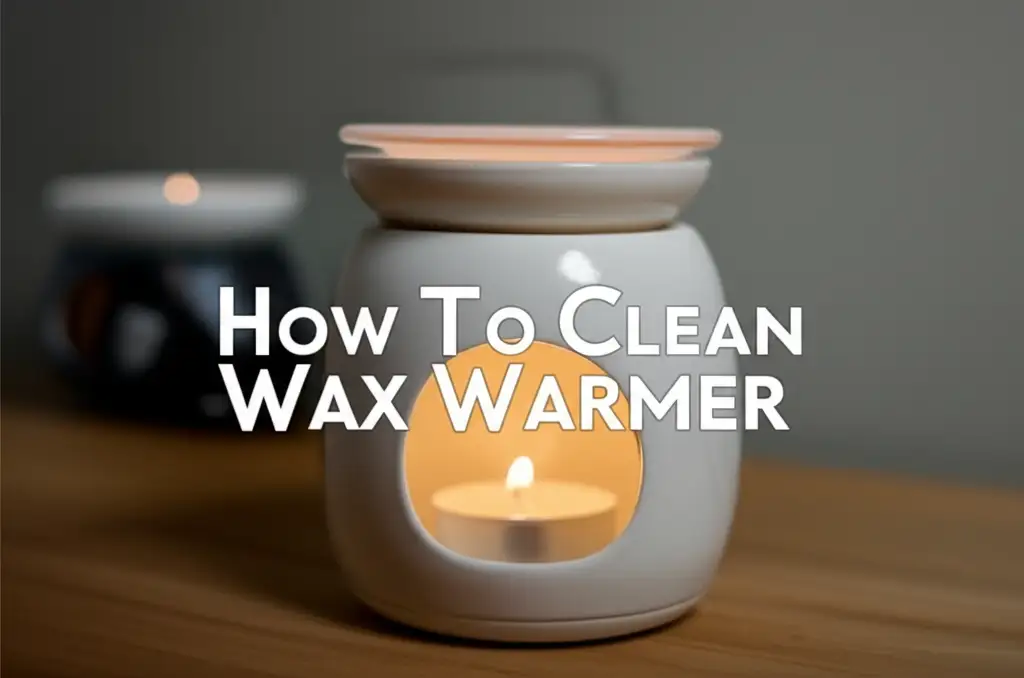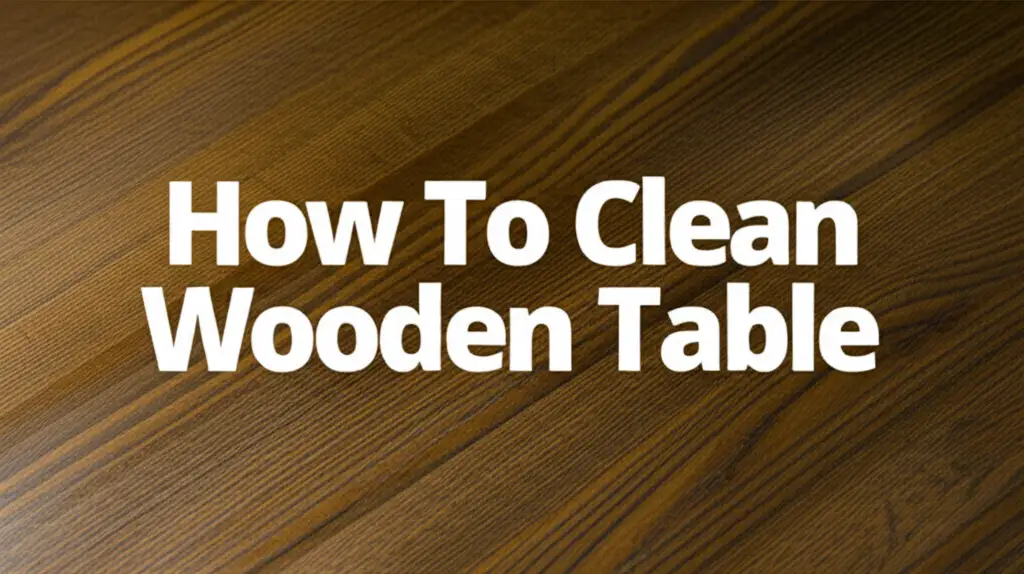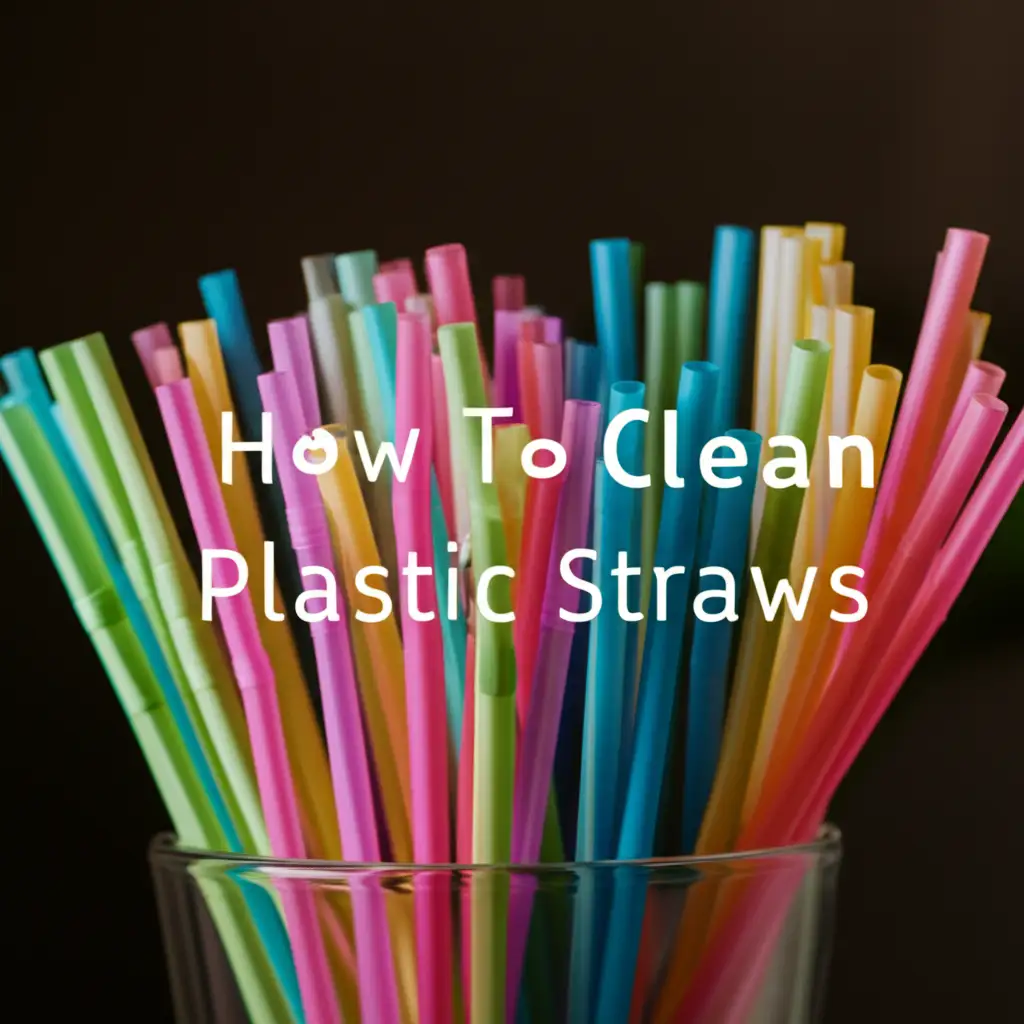· Home Cleaning · 16 min read
How To Clean Off Sticker Residue

Mastering How To Clean Off Sticker Residue Easily
You just bought a new item, peeled off the label, and now a stubborn, sticky mess remains. This sticky residue is frustrating. It attracts dirt and makes surfaces look unkempt. Learning how to clean off sticker residue effectively is a valuable skill for anyone.
Sticker residue appears on new purchases, old jars, or even car windows. Regular cleaning methods often fail to remove it. This guide gives you the best strategies. We will explore various materials, common household items, and specialized products. You will learn the science behind sticky adhesives. This helps you choose the right cleaning agent. We will also cover specific techniques for different surfaces. You will soon master the art of removing unwanted stickiness.
Takeaway:
- Identify the surface material before cleaning.
- Test cleaning agents in a hidden spot first.
- Apply gentle heat to loosen adhesive.
- Use oils, alcohol, or specialized removers.
- Scrape carefully with non-abrasive tools.
To clean off sticker residue, you need a multi-step approach. First, identify the surface material. Second, apply a suitable solvent or softening agent like rubbing alcohol, oil, or a commercial adhesive remover. Third, gently scrape or wipe away the residue. Repeat this process as needed, always testing in an inconspicuous area first.
Understanding Sticker Residue: Why It Sticks So Stubbornly
Sticker residue feels like a permanent mark. It often appears on items after you peel off labels. This residue is actually adhesive that did not transfer fully with the label. Understanding why it sticks so stubbornly helps you remove it better.
Adhesives are complex chemical compounds. They are designed to create a strong bond. Most stickers use pressure-sensitive adhesives (PSAs). These adhesives stick when you apply light pressure. They contain polymers that remain tacky at room temperature. When you peel a sticker, the adhesive is supposed to break cleanly. Sometimes, the adhesive’s internal strength is weaker than its bond to the surface. This causes the adhesive to split. A portion stays behind.
Different types of adhesives exist. Acrylic-based adhesives offer strong, long-lasting bonds. They resist temperature changes and moisture. Rubber-based adhesives are often found on temporary labels. They have good initial tack. However, they can degrade over time. This makes them harder to remove. Oil-based and water-based adhesives also exist. Each type reacts differently to various cleaning agents. For example, some respond well to oil-based removers. Others dissolve with alcohol or water. Knowing the type of adhesive helps you pick the right solvent.
The surface material also plays a role. Porous surfaces like unfinished wood absorb adhesives. This makes removal very difficult. Non-porous surfaces like glass or plastic allow adhesives to sit on top. This makes them easier to clean. However, some solvents can damage delicate finishes. Always identify the surface material before you start cleaning. A quick removal of a new sticker is always easier. Old residue dries out and hardens. This makes it more resistant to common methods.
Essential Tools and Materials for Removing Sticker Residue
Tackling sticker residue requires the right tools. You can often find these items in your home. Specialized products are also available. Gather your supplies before you begin. This ensures a smooth cleaning process.
Common household items are your first line of defense. Cooking oils work well on many residues. Olive oil, canola oil, or even peanut butter can dissolve sticky substances. Rubbing alcohol is another powerful solvent. It is safe for many surfaces. White vinegar also cuts through some adhesives. It is a natural acid. Nail polish remover containing acetone is effective but strong. Use it with caution. A hair dryer provides gentle heat. Heat softens adhesive, making it easier to scrape. Dish soap and warm water are good for initial cleaning or final rinses.
You also need specific cleaning aids. A microfiber cloth helps wipe away residue. It is gentle on surfaces. Plastic scrapers or old credit cards remove softened adhesive. Avoid metal scrapers on delicate surfaces. They can cause scratches. Cotton balls or paper towels apply solvents. A clean sponge helps with larger areas. For stubborn spots, a soft-bristle brush can assist. Always have a clean, dry cloth for polishing the surface afterward.
Specialized products offer targeted solutions. Goo Gone is a popular citrus-based cleaner. It effectively dissolves most adhesives. WD-40 is a multi-purpose lubricant. It can also break down sticky residue. Commercial adhesive removers are strong. Read their labels carefully. These products often have specific instructions. They may require good ventilation. Always wear gloves when using strong chemicals. This protects your skin. Choosing the right tool depends on the residue and the surface. Start with the gentlest method first. This prevents potential damage to your items.
General Methods to Clean Off Sticker Residue: A Step-by-Step Guide
Removing sticker residue can seem daunting. There are several general methods that work on many surfaces. Always start with the least abrasive approach. Gradually move to stronger methods if needed. This step-by-step guide helps you clean effectively.
First, try a simple physical removal. If the residue is fresh, sometimes you can just rub it off. Use your finger or a clean cloth. Rub in small circles. The friction might cause the residue to ball up. This makes it easy to peel away. This method works best on smooth, non-porous surfaces. It is also good for new or less sticky residue. Do not rub too hard. Excessive force can spread the residue. It can also scratch the surface.
Next, apply heat. Heat softens adhesives. This makes them easier to remove. Use a hair dryer on a low to medium setting. Hold it a few inches away from the residue. Warm the area for 20-30 seconds. The residue should become gummy. Immediately try to scrape it off. Use a plastic scraper, an old credit card, or your fingernail. Be careful not to overheat delicate items. This method is excellent for glass, ceramic, and some plastics. It also works on some metallic surfaces.
Then, consider using oils. Oils are excellent for dissolving many adhesive types. Apply a small amount of cooking oil directly to the residue. Let it sit for 5-10 minutes. The oil penetrates the sticky substance. It breaks down its bond. After soaking, wipe away the residue with a clean cloth. You may need to rub gently. For tougher spots, reapply oil and let it sit longer. Afterward, clean the oily spot with soap and water. This removes any greasy film. This method is safe for most surfaces, including painted ones. It is very effective on most paper and plastic sticker glues.
Finally, try alcohol or vinegar. Rubbing alcohol (isopropyl alcohol) is a strong solvent. Apply it to a cotton ball or cloth. Dab it onto the residue. Let it sit for a minute. Then, wipe it away. Alcohol evaporates quickly. This leaves no residue of its own. White vinegar also works for some adhesives. It is acidic. Use it similarly to alcohol. Apply, wait, and wipe. Always test these solvents first. They can strip paint or damage some plastics. These methods are particularly effective for many types of labels on non-porous surfaces.
Cleaning Sticker Residue from Glass and Hard Surfaces
Glass and other hard surfaces are common places for sticker residue. This includes windows, mirrors, ceramic tiles, and metal objects. These surfaces are generally durable. However, they still require the right approach. Knowing the best methods ensures clean, scratch-free results.
For glass surfaces, heat and solvents work very well. Start by warming the residue with a hair dryer. Hold it a few inches away. Heat the area for about 30 seconds. The adhesive will soften. Then, gently scrape it with a plastic scraper or a razor blade. Hold the blade at a shallow angle. This prevents scratching. After scraping, apply a glass cleaner. This removes any remaining film. You can also use rubbing alcohol. Apply it to a paper towel. Wipe the residue vigorously. For old or very stubborn sticker residue off glass, a specialized adhesive remover like Goo Gone is effective. Apply it, let it sit for a few minutes, then wipe clean. Remember to wash the surface thoroughly afterward with soap and water. This removes chemical residues.
Cleaning hard plastic surfaces requires care. Some plastics can react poorly to strong solvents. Start with warm, soapy water. Mix a few drops of dish soap with warm water. Apply this solution to the residue. Let it soak for a few minutes. Then, scrub gently with a sponge or cloth. If this fails, try cooking oil. Apply a small amount of olive or vegetable oil. Let it sit for 5-10 minutes. The oil breaks down the adhesive. Wipe it away with a soft cloth. For tougher residue on plastic, rubbing alcohol can be effective. Test it on an inconspicuous spot first. This checks for discoloration or damage. Avoid acetone-based removers on most plastics. They can dissolve or etch the surface.
Metal surfaces are usually quite robust. You can often use stronger methods here. Heat from a hair dryer or even a heat gun (with caution) can soften the adhesive. Scrape with a plastic tool. For more stubborn residue, apply rubbing alcohol or mineral spirits. These solvents cut through tough glues. WD-40 also works well on metal. Spray a small amount on the residue. Let it penetrate for a few minutes. Then wipe clean with a cloth. Always clean the metal surface afterward. Use a general cleaner or soap and water. This removes any oily film. For tape residue off glass, the same methods for sticker residue apply. Tape residue is often similar in composition to sticker glue.
Removing Sticker Residue from Delicate Surfaces and Electronics
Some surfaces are sensitive to harsh chemicals or strong scrubbing. These include wood furniture, painted walls, fabrics, and electronics. Removing sticker residue from these items needs a gentle touch. Using the wrong method can cause permanent damage.
For wood surfaces, especially finished or painted wood, avoid harsh solvents. They can strip the finish or damage the paint. Start with cooking oil. Apply a small amount of olive oil or vegetable oil to the residue. Let it sit for several minutes. The oil softens the adhesive without harming the wood. Gently wipe the residue away with a soft cloth. You might need to rub in the direction of the wood grain. If some residue remains, reapply oil. Afterward, clean the area with a damp cloth and a mild wood cleaner. This removes any oily film. For very delicate or antique wood, consult a professional.
Fabrics also require careful handling. This includes clothing, upholstery, and carpets. Do not use heat, as it can set the adhesive permanently into the fibers. Instead, try a solvent like rubbing alcohol. First, place a paper towel under the fabric (if possible). Apply a small amount of rubbing alcohol to a clean cloth or cotton ball. Dab the residue area. Do not rub vigorously, as this can spread the glue. The alcohol should dissolve the adhesive. Blot the area repeatedly until the residue lifts. For stubborn spots, a small amount of dish soap diluted in water can help. Rinse the fabric with clean water afterward. Test any solution on an inconspicuous area first. This checks for colorfastness.
Electronics, like laptops, phones, and TVs, are very sensitive. Their screens and plastic casings can be easily damaged. For sticker residue off a laptop or other devices, always use extreme caution. Never spray liquids directly onto electronics. Avoid harsh chemicals, especially on screens. A damp microfiber cloth (dampened with plain water) can often remove fresh, light residue. If that fails, a small amount of rubbing alcohol on a microfiber cloth is usually safe for plastic casings. Lightly wipe the area. Avoid screens. Screen-specific cleaners are safer for displays. For very delicate surfaces, a piece of fresh tape can sometimes lift old residue. Press the new tape firmly onto the residue, then quickly peel it away. This can pull off some of the sticky mess. Always power off and unplug electronics before cleaning.
Tackling Tough Sticker Residue: Advanced Tips and Tricks
Sometimes, standard methods simply do not work. Old, dried-on sticker residue or very strong adhesives can be particularly challenging. This requires a more persistent approach. These advanced tips help you tackle the most stubborn sticky messes. Always prioritize safety.
For very tough residue, repeated application is key. Instead of one long soak, try multiple shorter applications. Apply your chosen solvent (like Goo Gone, mineral spirits, or rubbing alcohol). Let it sit for the recommended time. Then, wipe and reapply. This process slowly breaks down layers of hardened adhesive. You may need to do this several times. Patience is crucial here. Using a soft-bristle brush, like an old toothbrush, can help. Gently scrub the residue while the solvent is active. This helps lift the sticky particles from the surface. Always check the compatibility of the solvent with your surface.
Consider specialty tools for scraping. While plastic scrapers are good, sometimes a sharper edge is needed. For glass or ceramic, a razor blade scraper is very effective. Hold it at a very low angle, almost flat against the surface. This minimizes the risk of scratching. Move the blade in one direction, pushing the softened residue. Always use fresh blades. Dull blades can scratch surfaces. For non-glass surfaces, nylon scrapers or plastic putty knives offer more rigidity than a credit card. They are less likely to scratch than metal.
Safety is paramount when using strong chemicals. Many effective adhesive removers contain strong solvents. Work in a well-ventilated area. Open windows or use a fan. Wear protective gloves to prevent skin irritation. Some chemicals can cause dizziness or headaches if inhaled. Always read the product’s safety data sheet or label. Follow all instructions carefully. Store these products away from children and pets. If a strong solvent is needed on a porous surface, proceed with extreme caution. These surfaces can absorb chemicals. This might cause discoloration or damage from within. Test in an inconspicuous area. If you are unsure, consult a professional cleaner.
Preventing Sticker Residue: Smart Habits for Cleaner Surfaces
The best way to deal with sticker residue is to prevent it. Adopting smart habits can save you time and frustration later. Many products now offer easy-peel labels. Look for these when you shop. They are designed to come off cleanly. This minimizes sticky messes from the start.
When applying new labels, consider their purpose. If it is a temporary label, choose one with a weaker adhesive. Removable labels are designed for easy peeling. For items you plan to keep, like storage containers, choose labels that are easy to write on and remove. You can also apply a protective layer first. For example, on plastic containers, a layer of clear packing tape applied before the label can prevent residue. When you remove the label, the tape comes off too. This protects the original surface.
Proper label removal techniques also prevent residue. Do not just rip labels off. Peel them slowly and steadily. Start from one corner. Pull the label back on itself, almost flat against the surface. This puts less stress on the adhesive. It helps it release cleanly. If the label starts to tear, stop. Try to lift another corner. You can also apply gentle heat before peeling. Use a hair dryer on a low setting. Warm the label for 10-15 seconds. This softens the adhesive. It helps the label come off in one piece.
For items you frequently label, consider alternatives to traditional stickers. Use tags that tie on. Choose adhesive-free labels. Reusable clings are great for windows or smooth surfaces. These leave no residue at all. For temporary notes, use painter’s tape instead of regular tape. Painter’s tape has a low-tack adhesive. It removes cleanly from most surfaces. By being proactive, you reduce your need for intense cleaning. You keep your items looking new and clean. Prevention is always easier than a cure.
FAQ Section
Q1: Is Goo Gone safe for all surfaces?
A1: Goo Gone is effective for many surfaces. It is generally safe for glass, metal, plastic, and ceramics. However, always test it in an inconspicuous area first. It can damage certain delicate finishes, painted surfaces, or specific plastics. Read the product label for specific surface warnings and instructions.
Q2: How do I remove old, dried-on sticker residue?
A2: Old, dried-on sticker residue requires more patience. Apply heat with a hair dryer to soften it. Then, use a stronger solvent like rubbing alcohol, mineral spirits, or a specialized adhesive remover. Let the product soak for longer periods. You may need to repeat the application multiple times. Use a plastic scraper for careful removal.
Q3: Can vinegar truly remove sticker residue?
A3: Yes, white vinegar can remove some types of sticker residue. Its acidic nature helps break down certain adhesives. Apply full-strength white vinegar to the residue. Let it sit for 5-10 minutes. Then, scrub with a cloth or soft brush. It works best on fresh residue or less stubborn glues. It is safe for most non-porous surfaces.
Q4: What should I do if the sticker residue won’t come off?
A4: If residue won’t come off, try a combination of methods. Apply heat, then use a strong adhesive remover. Let it soak longer. Use a non-abrasive scraping tool like a plastic razor blade. If it’s on a valuable item, consider consulting a professional cleaner. Avoid using overly aggressive methods that might damage the surface.
Q5: Will rubbing alcohol damage painted surfaces?
A5: Rubbing alcohol can damage some painted surfaces, especially those with latex or acrylic paints. It can dull, strip, or lift the paint. Always test rubbing alcohol on an inconspicuous area first. If you need a gentler option for painted surfaces, try cooking oil or a very mild dish soap solution.
Q6: What’s the fastest way to get sticker residue off?
A6: The fastest way often involves a combination of heat and a quick-acting solvent. Heat the residue with a hair dryer for 15-30 seconds. Immediately apply a few drops of rubbing alcohol or a commercial adhesive remover. Scrape gently with a plastic tool. This method works quickly for most fresh residues on non-delicate surfaces.
Conclusion
Learning how to clean off sticker residue transforms frustrating sticky messes into easy clean-ups. You now have a comprehensive guide. We explored the types of adhesives. We looked at common tools and materials. You learned general methods like heat and oil application. We also covered specific techniques for surfaces like glass, plastics, wood, and electronics. Remember to always assess the surface material. Choose the gentlest method first. Test any cleaning agent in a hidden area.
This knowledge empowers you to tackle any sticky situation. You can keep your belongings looking pristine. From new purchases to old items, clear surfaces are within your reach. Do not let sticky residue ruin your day. Apply these strategies with confidence. Continue exploring our other cleaning guides to keep your home spotless.
- sticker residue
- adhesive removal
- cleaning tips




